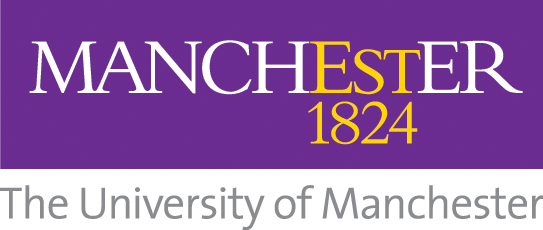Manchester. The John Rylands Library, Incunable Collection, 17250.1
- Source
- Manchester Digital Collections
- Library
- The John Rylands Library
- Shelfmark
-
- 17250.1
- Biblissima authority file
- Date
-
- 1454
- Language
-
- Latin
- Title
-
- Uniuersis Cristifidelib[us] p[o]ntes l[itte]ras inspecturis Paulinus Chappe Consiliari[us] (Uniuersis Cristifidelibus pontes litteras inspecturis Paulinus Chappe Consiliarius)
- Agent
-
-
- Preferred form
-
- Paulinus Chappe (14..?-14..?)
- Original form
-
- Chappe, Paulinus, active 1455.
- Biblissima authority file
-
- Preferred form
-
- Gutenberg (1394?-1468)
- Role
-
- Printer
- Original form
-
- Gutenberg, Johann, 1397?-1468
- Other form
-
- Gutenberg, Johann (Printer of the 42-line Bible)
- Gutenberg, Johann
- Gutenberg, Johann, 1398?-1468 > , impr.
- Biblissima portal
- Biblissima authority file
-
- Preferred form
-
- Mayence. Imprimerie de la Bible à 42 lignes
- Role
-
- Printer
- Original form
-
- Printer of the 42-line Bible
- Biblissima authority file
-
- Preferred form
-
- Alexander Horn (1762-1820)
- Role
-
- Bookseller
- Original form
-
- Horn, Alexander, 1762-1820
- Biblissima authority file
-
- Preferred form
-
- Jacques Joseph Techener (1802-1873)
- Role
-
- Bookseller
- Original form
-
- Techener, J.-J. (Jacques-Joseph), 1802-1870
- Other form
-
- Techener, J. (Jacques) (1802-1870)
- Biblissima portal
- Biblissima authority file
-
- Preferred form
-
- George John Spencer (1758-1834)
- Role
-
- Former owner
- Original form
-
- Spencer, George John Spencer, Earl, 1758-1834
- Other form
-
- Spencer, George John Spencer, Earl, 1758-1834, cartographer.
- George John Spencer, 2nd Earl Spencer, 1758-1834
- Biblissima portal
- Biblissima authority file
-
- Preferred form
-
- Georgius de Arnsberg (14..?-14..?)
- Role
-
- Former owner
- Original form
-
- Arnsbergh, Georgius de, active 1455
- Biblissima authority file
-
- Preferred form
-
- Frederica de Arnsberg (14..?-14..?)
- Role
-
- Former owner
- Original form
-
- Arnsbergh, Frederica de, active 1455
- Biblissima authority file
-
- Description
-
- Extent:
Single sheet. Leaf height: 201 mm, width: 282 mm.
Binding:
Unbound.
Subject(s):
Indulgences (Canon law)
Format:
Sheet
Provenance:
From the collection of George John, 2nd Earl Spencer (1758-1834). According to De Ricci, Catalogue raisonné des premières impressions de Mayence (1445-1467), no. 51, pp. 48-49, this indulgence was discovered in a binding from the Bibliothèque de Louvain c. 1829 and announced and illustrated in an article by Baron de Reiffenberg in Nouveaux mémoires de l'Académie Royale des Sciences de Bruxelles, volume 5 (1829) (paginated 1-12, the indulgence illustrated facing p. 12). The indulgence was stolen soon afterwards (see: A. Bernard, De l'origin et des debuts de l'imprimerie Paris: 1853) vol. 1, p. 172, note 1) and was acquired by Jacques-Joseph Techener, who sold it to Spencer, through the auspices of Payne and Foss. Spencer gave in exchange another indulgence, presumably the second copy of I-31 acquired by him from Alexander Horn (1762-1820) in 1800 from the library of the Benedictines of St. Emmeram in Regensburg. [see: Jensen, Kristian, Revolution and the antiquarian book, p. 60]. Not one of the two copies described in Dibdin, Biblioteca Spenceriana, I, p. xliv (no. 7), the first of these is UML 17250.2, the second was presumably the copy sold to Spencer by Horn in 1800, ex-Benedictines of St. Emmeram in Regensburg, later swapped for UML 17250.1.
Issued in Cologne to: Georgius de Arnsbergh et Federica eius uxor legitima Colon[ienses] diocesis.
Additions:
First issue, bearing a printed date of 1454. Bearing the earliest purchase date of any I-30: 27 February 1455, the printed date of 1454 altered in manuscript.
Note(s):
Title from incipit.
The Mainz Indulgences were issued to raise revenue to support the Western European struggle against the Turks and stem from Pope Nicolas V's announcement of 12 August 1451 that between 1 May 1452 and 30 April 1455 a general Indulgence would be granted for those contributing money towards the defence of Cyprus. The organisation and collecting of contributions was delegated to Paulinus Zappe (or Chappe), commissary for John II of Cyprus. Manuscript copies of these Indulgences survive dated from 4 January 1454 to 30 April 1455. Printed indulgences were presumably ordered in the autumn of 1454.
Gesamtkatalog der Wiegendrucke distinguishes thirteen variants, grouped under two editions, one of 30 lines (I-30), one of 31 lines (I-31). This edition bears 30 lines and is recorded in six variants, the result of minor changes made to the standing type during printing.
The first issue of I-30 bears a printed date of 1454 [one copy recorded], the remaining issues bear a printed date of 1455 [eight copies recorded]. The earliest purchase date known for the first issue of I-30 is 27 February 1455.
I-30 features three initial letters, which appear to be cast in metal and which are different from those used in I-31.
Ing, The Mainz indulgences of 1454/5, p. 19 states: "there is general agreement today that I 31 was printed before I 30 ... The pattern of purchase dates ... suggests that I 31 was in circulation first".
Ing, The Mainz indulgences of 1454/5, p. 20 states: "The issuing of one variant of I 30 with the printed date 1454 has been seen by most researchers as proof that the printing of I 30 was begun before the end of that year".
White, Editio Princeps, p. 46 states: "Most of the 31-line edition ... appears to have been printed during the last three months of 1454, with many copies post-dated to the next year in anticipation of continued sales. Assuming that the types were left standing, additional copies could have been printed as needed in 1455. The 30-line edition appears to have been started later, during the five months leading up to the expiration date of 30 April 1455".
Printed on vellum on one side only, the editions using different types and different ornamental initials. The headings in I-30 are set with the first state of the Gutenberg Bible typeface ('Scheide Donatus' type 146G; GW sates: 1:140G); the text type (2:90G) appears only in this indulgence.
White, Editio Princeps, p. 46 states: "Although a few abbreviation sorts from the 31-line edition were intermixed with the Catholicon types to print short works in Mainz and Eltville during the 1460s, the small types of the 30-line edition were never used again in any other surviving edition. Both sets of small types probably were produced in limited supplies exclusively for the indulgence campaign and then were melted down in order to prevent the production of unauthorized indulgences".
For a review of the debate concerning whether I-30 and I-31 were printed by the same workshop, or different workshops, see Ing, The Mainz indulgences of 1454/5.
The majority of known copies of I-30 were purchased in the Archdiocese of Cologne.
Publication:
[Mainz : Printer of the 42-line Bible (Johann Gutenberg), 1454 [before 27 February 1455].
- Extent:
- Place
-
-
- Preferred form
-
- Mainz (Rheinland-Pfalz, Germany)
- Original form
-
- Germany Mainz.
- Other form
-
- Mayence (Allemagne)
- Mayence
- Mayence (?)
- Mainz
- Magúncia
- Maguncia
- Mainz and St. Gall (?)
- [Mainz]
- Germany, Mainz
- Mainz, Germany
- Mainz. - Digitalisat: Fulda
- Mogunciaco
- II. Mainz
- [Mainz
- Mainz (Allemagne)
- see more
- Biblissima portal
- Biblissima authority file
-
- Rights
-
- Provided by The University of Manchester. Zooming image © University of Manchester Library, All rights reserved. Images and Metadata made available for download are licensed under a Creative Commons Attribution-NonCommercial 4.0 International License (CC BY-NC 4.0). Images and Metadata made available for download are licensed under a Creative Commons Attribution-NonCommercial 4.0 International License (CC BY-NC 4.0).

